Monitoring physiological processes of fast-growing broilers during the whole life cycle: Changes of redox-homeostasis effected to trassulfuration pathway predicting the development of non-alcoholic fatty liver disease
Author details:
In the broiler industry, the average daily gain and feed conversion ratio are extremely favorable, but the birds are beginning to approach the maximum of their genetic capacity. However, as a consequence of strong genetic selection, the occurrence of certain metabolic diseases, such as myopathies, ascites, sudden cardiac death and tibial dyschondroplasia, is increasing. These metabolic diseases can greatly affect the health status and welfare of birds, as well as the quality of meat. The main goal of this study was to investigate the changes in the main parameters of redox homeostasis during the rearing (1–42 days of age) of broilers with high genetic capacity, such as the concentrations of malondialdehyde, vitamin C, vitamin E, and reduced glutathione, the activities of glutathione peroxidase and glutathione reductase, and the inhibition rate of superoxide dismutase. Damage to the transsulfuration pathway during growth and the reason for changes in the level of homocysteine were investigated. Further, the parameters that can characterize the biochemical changes occurring in the birds were examined. Our study is the first characterize plasma albumin saturation. A method was developed to measure the levels of other small molecule thiol components of plasma. Changes in redox homeostasis induce increases in the concentrations of tumor necrosis factor alpha and inflammatory interleukins interleukin 2, interleukin 6 and interleukin 8 in broilers reared according to current large-scale husbandry technology and feeding protocols. A significant difference in all parameters tested was observed on the 21st day. The concentrations of cytokines and homocysteine increased, while the concentrations of glutathione and cysteine in the plasma decreased. Our findings suggest that observed changes in the abovementioned biochemical indices have a negative effect on poultry health.
Introduction
Materials and methods
Ethical approval
Birds, bird housing, experimental design, and diet
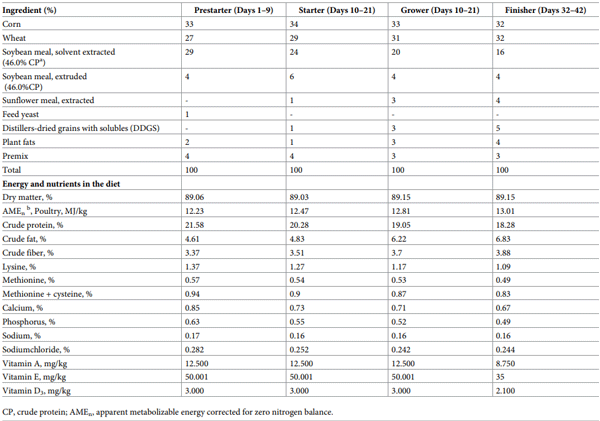
Determination of antioxidant parameters


Determination of aspartate aminotransferase (AST) levels
Determination of total thiol and disulfide contents
LC–MS analysis
Determination of cytokine concentrations
Histological examinations
Statistical analysis
Results and discussion
Growth performance

Redox parameters
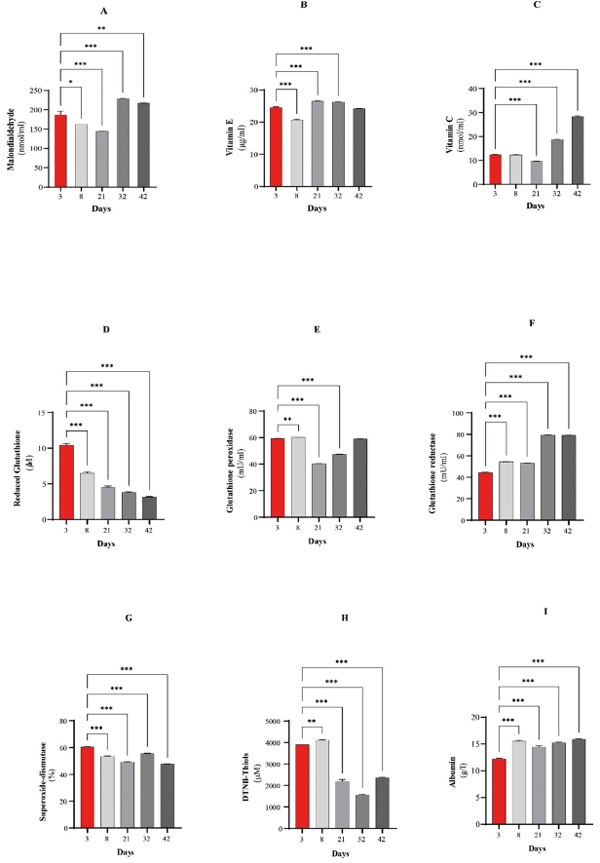
The concentration of thiols
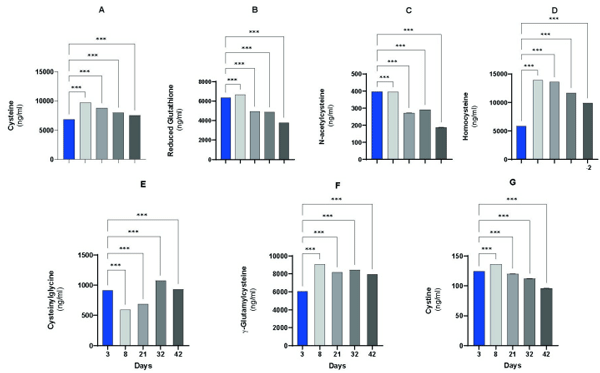
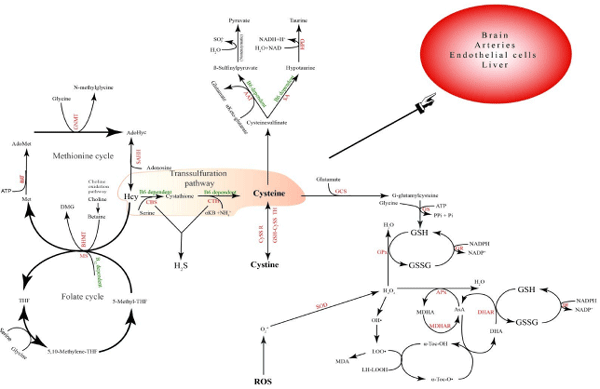
Relationship between the antioxidant system and inflammatory markers
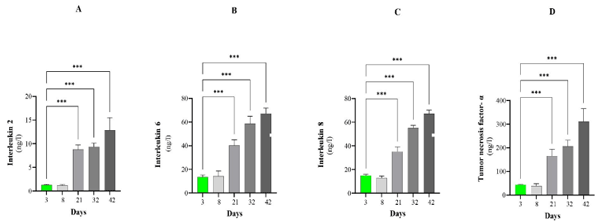
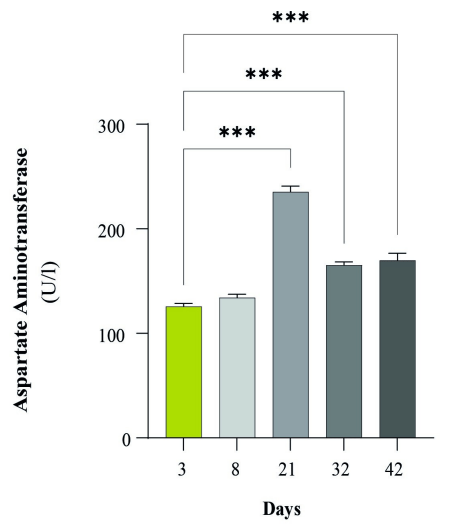
Correlation between thiol compounds, cytokines and antioxidant parameters
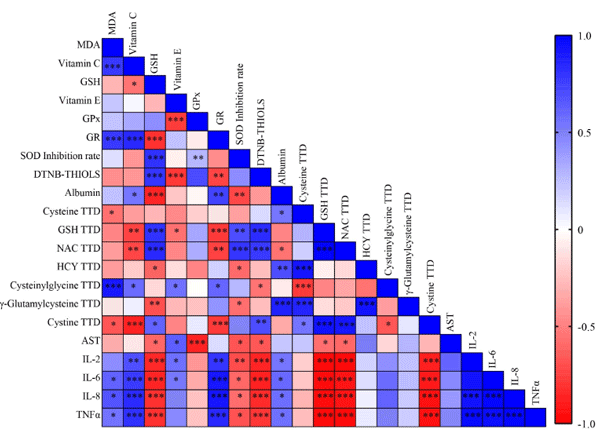
Histological alterations to the liver
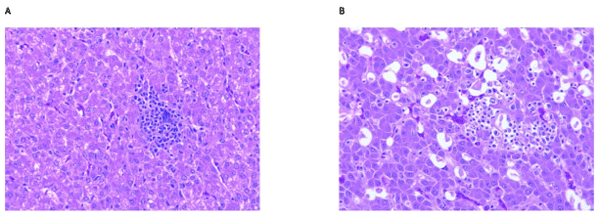
Conclusion
Acknowledgments
1. Hartcher K, Lum H. Genetic selection of broilers and welfare consequences: a review. World’s Poultry Science Journal. 2019; 76: 1–14. https://doi.org/10.1080/00439339.2019.1680025
2. Baghbanzadeh A, Decuypere E. Ascites syndrome in broilers: physiological and nutritional perspectives. Avian Pathology. 2008; 37: 117–126. https://doi.org/10.1080/03079450801902062 PMID: 18393088
3. Wideman RF. Pathophysiology of heart/lung disorders: pulmonary hypertension syndrome in broiler chickens. World’s Poultry Science Journal. 2001; 57: 289–307. https://doi.org/10.1079/ WPS20010021
4. Rowe E, Dawkins MS, Gebhardt-Henrich SG. A Systematic Review of Precision Livestock Farming in the Poultry Sector: Is Technology Focussed on Improving Bird Welfare? Animals. 2019; 9: 614. https://doi.org/10.3390/ani9090614 PMID: 31461984
5. Skaperda Z-V, Veskoukis A, Kouretas D. Farm animal welfare, productivity and meat quality: Interrelation with redox status regulation and antioxidant supplementation as a nutritional intervention (Review). World Academy of Sciences Journal. 2019. https://doi.org/10.3892/wasj.2019.19
6. Lauridsen C. From oxidative stress to inflammation: redox balance and immune system. Poultry Science. 2019; 98: 4240–4246. https://doi.org/10.3382/ps/pey407 PMID: 30371893
7. Celi P, Gabai G. Oxidant/Antioxidant Balance in Animal Nutrition and Health: The Role of Protein Oxidation. Frontiers in Veterinary Science. 2015; 2. Available: https://doi.org/10.3389/fvets.2015.00048 PMID: 26664975
8. O’Reilly EL, Burchmore RJ, Sparks NH, Eckersall PD. The effect of microbial challenge on the intestinal proteome of broiler chickens. Proteome Science. 2017; 15: 10. https://doi.org/10.1186/s12953- 017-0118-0 PMID: 28572745
9. Zhang J, Li C, Tang X, Lu Q, Sa R, Zhang H. Proteome changes in the small intestinal mucosa of broilers (Gallus gallus) induced by high concentrations of atmospheric ammonia. Proteome Sci. 2015; 13: 9. https://doi.org/10.1186/s12953-015-0067-4 PMID: 25741220
10. Lake JA, Dekkers JCM, Abasht B. Genetic basis and identification of candidate genes for wooden breast and white striping in commercial broiler chickens. Sci Rep. 2021; 11: 6785. https://doi.org/10. 1038/s41598-021-86176-4 PMID: 33762630
11. Liu R, Kong F, Xing S, He Z, Bai L, Sun J, et al. Dominant changes in the breast muscle lipid profiles of broiler chickens with wooden breast syndrome revealed by lipidomics analyses. Journal of Animal Science and Biotechnology. 2022; 13: 93. https://doi.org/10.1186/s40104-022-00743-x PMID: 35927736
12. Agyare C, Boamah VE, Osei CNZ and FB, Agyare C, Boamah VE, Osei CNZ and FB. Antibiotic Use in Poultry Production and Its Effects on Bacterial Resistance. Antimicrobial Resistance—A Global Threat. IntechOpen; 2018. https://doi.org/10.5772/intechopen.79371
13. Sihvo H-K, Immonen K, Puolanne E. Myodegeneration With Fibrosis and Regeneration in the Pectoralis Major Muscle of Broilers. Vet Pathol. 2014; 51: 619–623. https://doi.org/10.1177/ 0300985813497488 PMID: 23892375
14. Liu J, Puolanne E, Schwartzkopf M, Arner A. Altered Sarcomeric Structure and Function in Woody Breast Myopathy of Avian Pectoralis Major Muscle. Frontiers in Physiology. 2020; 11. Available: https://doi.org/10.3389/fphys.2020.00287 PMID: 32328000
15. Mutryn MF, Brannick EM, Fu W, Lee WR, Abasht B. Characterization of a novel chicken muscle disorder through differential gene expression and pathway analysis using RNA-sequencing. BMC Genomics. 2015; 16: 399. https://doi.org/10.1186/s12864-015-1623-0 PMID: 25994290
16. Soglia F, Gao J, Mazzoni M, Puolanne E, Cavani C, Petracci M, et al. Superficial and deep changes of histology, texture and particle size distribution in broiler wooden breast muscle during refrigerated storage. Poultry Science. 2017; 96: 3465–3472. https://doi.org/10.3382/ps/pex115 PMID: 28595272
17. Xing T, Pan X, Zhang L, Gao F. Hepatic Oxidative Stress, Apoptosis, and Inflammation in Broiler Chickens With Wooden Breast Myopathy. Front Physiol. 2021; 12: 659777. https://doi.org/10.3389/ fphys.2021.659777 PMID: 33935806
18. Maharjan P, Hilton K, Weil J, Suesuttajit N, Beitia A, Owens CM, et al. Characterizing Woody Breast Myopathy in a Meat Broiler Line by Heat Production, Microbiota, and Plasma Metabolites. Frontiers in Veterinary Science. 2020; 6. Available: https://www.frontiersin.org/articles/10.3389/fvets.2019.00497.
19. Bessei W. Welfare of broilers: A review. World’s Poultry Science Journal. 2006; 62: 455–466. https:// doi.org/10.1017/S0043933906001085
20. Kubale V, Merry K, Miller G, Rutland MRD and CS, Kubale V, Merry K, et al. Avian Cardiovascular Disease Characteristics, Causes and Genomics. Application of Genetics and Genomics in Poultry Science. IntechOpen; 2018. https://doi.org/10.5772/intechopen.78005
21. Shen M, Xie Z, Jia M, Li A, Han H, Wang T, et al. Effect of Bamboo Leaf Extract on Antioxidant Status and Cholesterol Metabolism in Broiler Chickens. Animals (Basel). 2019; 9: 699. https://doi.org/10. 3390/ani9090699 PMID: 31540467
22. Wilson JB, Julian RJ, Barker IK. Lesions of Right Heart Failure and Ascites in Broiler Chickens. Avian Diseases. 1988; 32: 246–261. https://doi.org/10.2307/1590812 PMID: 3041956
23. Wang Y, Guo Y, Ning D, Peng Y, Cai H, Tan J, et al. Changes of hepatic biochemical parameters and proteomics in broilers with cold-induced ascites. J Animal Sci Biotechnol. 2012; 3: 41. https://doi.org/ 10.1186/2049-1891-3-41 PMID: 23232037
24. Samuels SE. Diet, total plasma homocysteine concentrations and mortality rates in broiler chickens. Can J Anim Sci. 2003; 83: 601–604. https://doi.org/10.4141/A02-029
25. Tabata F, Wada Y, Kawakami S, Miyaji K. Serum Albumin Redox States: More Than Oxidative Stress Biomarker. Antioxidants (Basel). 2021; 10: 503. https://doi.org/10.3390/antiox10040503 PMID: 33804859
26. Turell L, Radi R, Alvarez B. The thiol pool in human plasma: The central contribution of albumin to redox processes. Free Radic Biol Med. 2013; 65: 244–253. https://doi.org/10.1016/j.freeradbiomed. 2013.05.050 PMID: 23747983
27. Taylor PS, Hemsworth PH, Groves PJ, Gebhardt-Henrich SG, Rault J-L. Frequent range visits further from the shed relate positively to free-range broiler chicken welfare. Animal. 2020; 14: 138–149. https://doi.org/10.1017/S1751731119001514 PMID: 31280755
28. Meluzzi A, Sirri F. Welfare of broiler chickens. Italian Journal of Animal Science. 2009; 8: 161–173. https://doi.org/10.4081/ijas.2009.s1.161
29. Malik PK, Bhatta R, Takahashi J, Kohn R, Prasad CS. Livestock Production and Climate Change. CABI; 2015. 30. Ross-BroilerHandbook2018-EN.pdf. Available: https://aviagen.com/assets/Tech_Center/Ross_ Broiler/Ross-BroilerHandbook2018-EN.pdf.
31. Alvarez-Mon MA, Ortega MA, Garcı´a-Montero C, Fraile-Martinez O, Lahera G, Monserrat J, et al. Differential malondialdehyde (MDA) detection in plasma samples of patients with major depressive disorder (MDD): A potential biomarker. The Journal of International Medical Research. 2022; 50. https:// doi.org/10.1177/03000605221094995 PMID: 35615790
32. Grotto D, Maria LS, Valentini J, Paniz C, Schmitt G, Garcia SC, et al. Importance of the lipid peroxidation biomarkers and methodological aspects FOR malondialdehyde quantification. Quı´m Nova. 2009; 32: 169–174. https://doi.org/10.1590/S0100-40422009000100032
33. Santolim LV, Amaral MEC do, Fachi JL, Mendes MF, Oliveira CA de. Vitamin E and caloric restriction promote hepatic homeostasis through expression of connexin 26, N-cad, E-cad and cholesterol metabolism genes. The Journal of Nutritional Biochemistry. 2017; 39: 86–92. https://doi.org/10.1016/j. jnutbio.2016.09.011 PMID: 27816814
34. Lee H, Ahn J, Shin SS, Yoon M. Ascorbic acid inhibits visceral obesity and nonalcoholic fatty liver disease by activating peroxisome proliferator-activated receptor α in high-fat-diet-fed C57BL/6J mice. Int J Obes. 2019; 43: 1620–1630. https://doi.org/10.1038/s41366-018-0212-0 PMID: 30283077
35. Molna´r A´, Homoki DZ, Ba´rsony P, Kerte´sz A, Remenyik J, Pesti-Asbo´th G, et al. The Effects of Contrast between Dark- and Light-Coloured Tanks on the Growth Performance and Antioxidant Parameters of Juvenile European Perch (Perca fluviatilis). Water. 2022; 14: 969. https://doi.org/10.3390/ w14060969
36. Blaschke K, Ebata KT, Karimi MM, Zepeda-Martı´nez JA, Goyal P, Mahapatra S, et al. Vitamin C induces Tet-dependent DNA demethylation in ESCs to promote a blastocyst-like state. Nature. 2013; 500: 222–226. https://doi.org/10.1038/nature12362 PMID: 23812591
37. Willemsen H, Swennen Q, Everaert N, Geraert P-A, Mercier Y, Stinckens A, et al. Effects of dietary supplementation of methionine and its hydroxy analog dl-2-hydroxy-4-methylthiobutanoic acid on growth performance, plasma hormone levels, and the redox status of broiler chickens exposed to high temperatures. Poultry Science. 2011; 90: 2311–2320. https://doi.org/10.3382/ps.2011-01353 PMID: 21934015
38. Swennen Q, Geraert P-A, Mercier Y, Everaert N, Stinckens A, Willemsen H, et al. Effects of dietary protein content and 2-hydroxy-4-methylthiobutanoic acid or dl-methionine supplementation on performance and oxidative status of broiler chickens. British Journal of Nutrition. 2011; 106: 1845–1854. https://doi.org/10.1017/S0007114511002558 PMID: 21736775
39. Russell JR, Sexten WJ, Kerley MS, Hansen SL. Relationship between antioxidant capacity, oxidative stress, and feed efficiency in beef steers1. Journal of Animal Science. 2016; 94: 2942–2953. https:// doi.org/10.2527/jas.2016-0271 PMID: 27482681
40. Li Y, Ning L, Yin Y, Wang R, Zhang Z, Hao L, et al. Age-related shifts in gut microbiota contribute to cognitive decline in aged rats. Aging (Albany NY). 2020; 12: 7801–7817. https://doi.org/10.18632/ aging.103093 PMID: 32357144
41. Mehanna OM, El Askary A, Al-Shehri S, El-Esawy B. Effect of phosphodiesterase inhibitors on renal functions and oxidant/antioxidant parameters in streptozocin-induced diabetic rats. Archives of Physiology and Biochemistry. 2018; 124: 424–429. https://doi.org/10.1080/13813455.2017.1419267 PMID: 29271249
42. Saipin N, Semsirmboon S, Rungsiwiwut R, Thammacharoen S. High ambient temperature directly decreases milk synthesis in the mammary gland in Saanen goats. Journal of Thermal Biology. 2020; 94: 102783. https://doi.org/10.1016/j.jtherbio.2020.102783 PMID: 33292975
43. Tomas-Sanchez C, Blanco-Alvarez V-M, Martinez-Fong D, Gonzalez-Barrios J-A, Gonzalez-Vazquez A, Aguilar-Peralta A-K, et al. Prophylactic Zinc and Therapeutic Selenium Administration Increases the Antioxidant Enzyme Activity in the Rat Temporoparietal Cortex and Improves Memory after a Transient Hypoxia-Ischemia. Oxid Med Cell Longev. 2018; 2018: 9416432. https://doi.org/10.1155/2018/ 9416432 PMID: 30258527
44. Tabatabaei A, Babaee M, Moradi N, Nabavi M, Arshi S, Fallah S. Serum Concentration of Selenium and GPX Enzyme Activity in Iranian Children with Asthma. Mod Care J. 2020; 17. https://doi.org/10. 5812/modernc102396
45. Pesti-Asbo´th G, Molna´r-Bı´ro´ne´ P, Forga´cs I, Remenyik J, Dobra´nszki J. Ultrasonication affects the melatonin and auxin levels and the antioxidant system in potato in vitro. Front Plant Sci. 2022; 13: 979141. https://doi.org/10.3389/fpls.2022.979141 PMID: 36247572
46. Szabo´ K, Gesztelyi R, Lampe´ N, Kiss R, Remenyik J, Pesti-Asbo´th G, et al. Fenugreek (Trigonella Foenum-Graecum) Seed Flour and Diosgenin Preserve Endothelium-Dependent Arterial Relaxation in a Rat Model of Early-Stage Metabolic Syndrome. Int J Mol Sci. 2018; 19: E798. https://doi.org/10. 3390/ijms19030798 PMID: 29534453
47. Villa-Bellosta R. Dietary magnesium supplementation improves lifespan in a mouse model of progeria. EMBO Mol Med. 2020; 12: e12423. https://doi.org/10.15252/emmm.202012423 PMID: 32875720
48. Lozano I, Van der Werf R, Bietiger W, Seyfritz E, Peronet C, Pinget M, et al. High-fructose and high-fat diet-induced disorders in rats: impact on diabetes risk, hepatic and vascular complications. Nutr Metab (Lond). 2016; 13: 15. https://doi.org/10.1186/s12986-016-0074-1 PMID: 26918024
49. Almatroodi SA, Alnuqaydan AM, Babiker AY, Almogbel MA, Khan AA, Husain Rahmani A. 6-Gingerol, a Bioactive Compound of Ginger Attenuates Renal Damage in Streptozotocin-Induced Diabetic Rats by Regulating the Oxidative Stress and Inflammation. Pharmaceutics. 2021; 13: 317. https://doi.org/ 10.3390/pharmaceutics13030317 PMID: 33670981
50. Park J, Kwon OS, Cho SY, Paick J-S, Kim SW. Chronic administration of atorvastatin could partially ameliorate erectile function in streptozotocin-induced diabetic rats. PLoS One. 2017; 12: e0172751. https://doi.org/10.1371/journal.pone.0172751 PMID: 28245261
51. Rah DK, Min HJ, Kim YW, Cheon YW. Effect of Platelet-Rich Plasma on Ischemia-Reperfusion Injury in a Skin Flap Mouse Model. Int J Med Sci. 2017; 14: 829–839. https://doi.org/10.7150/ijms.19573 PMID: 28824320
52. Ellman GL. Tissue sulfhydryl groups. Archives of Biochemistry and Biophysics. 1959; 82: 70–77. https://doi.org/10.1016/0003-9861(59)90090-6 PMID: 13650640
53. da Rosa G, Alba DF, Silva AD, Gris A, Mendes RE, Mostardeiro VB, et al. Impact of Escherichia coli infection in broiler breeder chicks: The effect of oxidative stress on weight gain. Microbial Pathogenesis. 2020; 139: 103861. https://doi.org/10.1016/j.micpath.2019.103861 PMID: 31715322
54. Fellenberg M, Delporte C, Backhouse N, Peña I, Speisky H. Effect of dried extract of boldo (Peumus Boldus Mol.) on growth and oxidative tissue status of broiler chickens. Rev Bras Cienc Avic. 2008; 10: 245–252. https://doi.org/10.1590/S1516-635X2008000400009
55. Hu M-L. [41] Measurement of protein thiol groups and glutathione in plasma. Methods in Enzymology. Elsevier; 1994 pp. 380–385. https://doi.org/10.1016/S0076-6879(94)33044-1
56. Doumas BT, Ard Watson W, Biggs HG. Albumin standards and the measurement of serum albumin with bromcresol green. Clinica Chimica Acta. 1971; 31: 87–96. https://doi.org/10.1016/0009-8981(71) 90365-2 PMID: 5544065
57. Gane EJ, Weilert F, Orr DW, Keogh GF, Gibson M, Lockhart MM, et al. The mitochondria-targeted anti-oxidant mitoquinone decreases liver damage in a phase II study of hepatitis C patients. Liver International. 2010; 30: 1019–1026. https://doi.org/10.1111/j.1478-3231.2010.02250.x PMID: 20492507
58. Fu X, Cate SA, Dominguez M, Osborn W, O¨ zpolat T, Konkle BA, et al. Cysteine Disulfides (Cys-ss-X) as Sensitive Plasma Biomarkers of Oxidative Stress. Scientific Reports. 2019; 9: 115. https://doi.org/ 10.1038/s41598-018-35566-2 PMID: 30643157
59. Wandita TG, Joshi N, Nam IS, Yang SH, Park HS, Hwang SG. Dietary Supplementation of Purified Amino Acid Derived from Animal Blood on Immune Response and Growth Performance of Broiler Chicken. Tropical Animal Science Journal. 2018; 41: 108–113. https://doi.org/10.5398/tasj.2018.41.2. 108
60. Varasteh S, Braber S, Akbari P, Garssen J, Fink-Gremmels J. Differences in Susceptibility to Heat Stress along the Chicken Intestine and the Protective Effects of Galacto-Oligosaccharides. PLOS ONE. 2015; 10: e0138975. https://doi.org/10.1371/journal.pone.0138975 PMID: 26402906
61. Krzysica P, Verhoog L, de Vries S, Smits C, Savelkoul HFJ, Tijhaar E. Optimization of Capture ELISAs for Chicken Cytokines Using Commercially Available Antibodies. Animals. 2022; 12: 3040. https://doi. org/10.3390/ani12213040 PMID: 36359163
62. Jarosz ŁS, Marek A, Grądzki Z, Kwiecień M, Kaczmarek B. The effect of feed supplementation with a copper-glycine chelate and copper sulphate on selected humoral and cell-mediated immune parameters, plasma superoxide dismutase activity, ceruloplasmin and cytokine concentration in broiler chickens. J Anim Physiol Anim Nutr. 2018; 102: e326–e336. https://doi.org/10.1111/jpn.12750 PMID: 28603872
63. Gyongyosi A, Docs O, Czimmerer Z, Orosz L, Horvath A, To¨ro¨k O, et al. Measuring Expression Levels of Small Regulatory RNA Molecules from Body Fluids and Formalin-Fixed, Paraffin-Embedded Samples. In: Alvarez ML, Nourbakhsh M, editors. RNA Mapping: Methods and Protocols. New York, NY: Springer; 2014. pp. 105–119. https://doi.org/10.1007/978-1-4939-1062-5_10 PMID: 25055905
64. Al-Tamimi H, Mahmoud K, Al-Dawood A, Nusairat B, Khalaf HB. Thermotolerance of Broiler Chicks Ingesting Dietary Betaine and/or Creatine. Animals. 2019; 9: 742. https://doi.org/10.3390/ani9100742 PMID: 31569463
65. Ndlela SZ, Moyo M, Mkwanazi MV, Chimonyo M. Responses of gut morphology, serum biochemistry, and quality of breast meat to water deprivation in broilers. Can J Anim Sci. 2020; 100: 59–68. https:// doi.org/10.1139/cjas-2018-0221
66. Fanatico AC, Pillai PB, Hester PY, Falcone C, Mench JA, Owens CM, et al. Performance, Livability, and Carcass Yield of Slow- and Fast-Growing Chicken Genotypes Fed Low-Nutrient or Standard Diets and Raised Indoors or with Outdoor Access. Poultry Science. 2008; 87: 1012–1021. https://doi. org/10.3382/ps.2006-00424 PMID: 18492987
67. Cygan-Szczegielniak D, Bogucka J. Growth Performance, Carcass Characteristics and Meat Quality of Organically Reared Broiler Chickens Depending on Sex. Animals. 2021; 11: 3274. https://doi.org/ 10.3390/ani11113274 PMID: 34828006
68. Canoğulları S, Baylan M, Bulancak A, Ayaşan T. Differences in performance, carcass characteristics and meat quality between fast- and slow-growing broiler genotypes. 2019 [cited 1 Mar 2023]. https:// doi.org/10.23751/pn.v21i3.7747
69. Tudorache M, Custura I, Gheorghe A, Habeanu M, Lefter NA, Pogurschi EN, et al. Effects of Genotype and Diet on Performance, Carcass Traits, and Blood Profiles of Slow-Growing Chicks Obtained by Crosses of Local Breed with Commercial Genotype. Agriculture. 2022; 12: 1906. https://doi.org/10. 3390/agriculture12111906
70. Checa J, Aran JM. Reactive Oxygen Species: Drivers of Physiological and Pathological Processes. JIR. 2020;Volume 13: 1057–1073. https://doi.org/10.2147/JIR.S275595 PMID: 33293849
71. Birk J, Meyer M, Aller I, Hansen HG, Odermatt A, Dick TP, et al. Endoplasmic reticulum: reduced and oxidized glutathione revisited. J Cell Sci. 2013; 126: 1604–1617. https://doi.org/10.1242/jcs.117218 PMID: 23424194
72. Rahman K. Studies on free radicals, antioxidants, and co-factors. Clin Interv Aging. 2007; 2: 219–236. PMID: 18044138
73. Babinszky L, Horva´th M, Remenyik J, Verstegen MWA. The adverse effects of heat stress on the antioxidant status and performance of pigs and poultry and reducing these effects with nutritional tools. Poultry and pig nutrition: Challenges of the 21st century. 2019; 187–208. https://doi.org/10.3920/978- 90-8686-884-1_8
74. Ayala A, Muñoz MF, Argu¨elles S. Lipid Peroxidation: Production, Metabolism, and Signaling Mechanisms of Malondialdehyde and 4-Hydroxy-2-Nonenal. Oxid Med Cell Longev. 2014; 2014: 360438. https://doi.org/10.1155/2014/360438 PMID: 24999379
75. Pizzino G, Irrera N, Cucinotta M, Pallio G, Mannino F, Arcoraci V, et al. Oxidative Stress: Harms and Benefits for Human Health. Oxid Med Cell Longev. 2017; 2017: 8416763. https://doi.org/10.1155/ 2017/8416763 PMID: 28819546
76. Kurutas EB. The importance of antioxidants which play the role in cellular response against oxidative/ nitrosative stress: current state. Nutr J. 2016; 15: 71. https://doi.org/10.1186/s12937-016-0186-5 PMID: 27456681
77. Szarka A, Tomasskovics B, Ba´nhegyi G. The Ascorbate-glutathione-α-tocopherol Triad in Abiotic Stress Response. Int J Mol Sci. 2012; 13: 4458–4483. https://doi.org/10.3390/ijms13044458 PMID: 22605990
78. Miazek K, Beton K, Śliwińska A, Brożek-Płuska B. The Effect of β-Carotene, Tocopherols and Ascorbic Acid as Anti-Oxidant Molecules on Human and Animal In Vitro/In Vivo Studies: A Review of Research Design and Analytical Techniques Used. Biomolecules. 2022; 12: 1087. https://doi.org/10. 3390/biom12081087 PMID: 36008981
79. Barouh N, Bourlieu-Lacanal C, Figueroa-Espinoza MC, Durand E, Villeneuve P. Tocopherols as antioxidants in lipid-based systems: The combination of chemical and physicochemical interactions determines their efficiency. Comp Rev Food Sci Food Safe. 2022; 21: 642–688. https://doi.org/10.1111/ 1541-4337.12867 PMID: 34889039
80. Kumar A, Prasad A, Pospı´sˇil P. Formation of α-tocopherol hydroperoxide and α-tocopheroxyl radical: relevance for photooxidative stress in Arabidopsis. Sci Rep. 2020; 10: 19646. https://doi.org/10.1038/ s41598-020-75634-0 PMID: 33184329
81. Jiang Q. Natural forms of vitamin E: metabolism, antioxidant and anti-inflammatory activities and the role in disease prevention and therapy. Free Radic Biol Med. 2014; 72: 76–90. https://doi.org/10.1016/ j.freeradbiomed.2014.03.035 PMID: 24704972
82. Martemucci G, Costagliola C, Mariano M, D’andrea L, Napolitano P, D’Alessandro AG. Free Radical Properties, Source and Targets, Antioxidant Consumption and Health. Oxygen. 2022; 2: 48–78. https://doi.org/10.3390/oxygen2020006
83. Aquilano K, Baldelli S, Ciriolo MR. Glutathione: new roles in redox signaling for an old antioxidant. Frontiers in Pharmacology. 2014; 5. Available: https://doi.org/10.3389/fphar.2014.00196 PMID: 25206336
84. Noctor G, Queval G, Mhamdi A, Chaouch S, Foyer CH. Glutathione. Arabidopsis Book. 2011; 9: e0142. https://doi.org/10.1199/tab.0142 PMID: 22303267
85. Weaver K, Skouta R. The Selenoprotein Glutathione Peroxidase 4: From Molecular Mechanisms to Novel Therapeutic Opportunities. Biomedicines. 2022; 10: 891. https://doi.org/10.3390/ biomedicines10040891 PMID: 35453641
86. Giustarini D, Tsikas D, Colombo G, Milzani A, Dalle-Donne I, Fanti P, et al. Pitfalls in the analysis of the physiological antioxidant glutathione (GSH) and its disulfide (GSSG) in biological samples: An elephant in the room. J Chromatogr B Analyt Technol Biomed Life Sci. 2016; 1019: 21–28. https://doi.org/ 10.1016/j.jchromb.2016.02.015 PMID: 26905452
87. El-Senousey HK, Chen B, Wang JY, Atta AM, Mohamed FR, Nie QH. Effects of dietary vitamin C, vitamin E, and alpha-lipoic acid supplementation on the antioxidant defense system and immune-related gene expression in broilers exposed to oxidative stress by dexamethasone. Poultry Science. 2018; 97: 30–38. https://doi.org/10.3382/ps/pex298 PMID: 29077914
88. Musalmah M, Fairuz AH, Gapor MT, Ngah WZW. Effect of vitamin E on plasma malondialdehyde, antioxidant enzyme levels and the rates of wound closures during wound healing in normal and diabetic rats. Asia Pac J Clin Nutr. 2002; 11 Suppl 7: S448–451. https://doi.org/10.1046/j.1440-6047.11.s.7.6.x PMID: 12492633
89. Assady M, Farahnak A, Golestani A, Esharghian M. Superoxide Dismutase (SOD) Enzyme Activity Assay in Fasciola spp. Parasites and Liver Tissue Extract. Iran J Parasitol. 2011; 6: 17–22. PMID: 22347309
90. Escobar JA, Rubio MA, Lissi EA. SOD and catalase inactivation by singlet oxygen and peroxyl radicals. Free Radical Biology and Medicine. 1996; 20: 285–290. https://doi.org/10.1016/0891-5849(95) 02037-3 PMID: 8720898
91. Baba SP, Bhatnagar A. ROLE OF THIOLS IN OXIDATIVE STRESS. Curr Opin Toxicol. 2018; 7: 133– 139. https://doi.org/10.1016/j.cotox.2018.03.005 PMID: 30338308
92. Pisoschi AM, Pop A. The role of antioxidants in the chemistry of oxidative stress: A review. European Journal of Medicinal Chemistry. 2015; 97: 55–74. https://doi.org/10.1016/j.ejmech.2015.04.040 PMID: 25942353
93. Khare M, Mohanty C, Das BK, Jyoti A, Mukhopadhyay B, Mishra SP. Free Radicals and Antioxidant Status in Protein Energy Malnutrition. International Journal of Pediatrics. 2014; 2014: e254396. https://doi.org/10.1155/2014/254396 PMID: 24790610
94. To´thova´ C, Seszta´kova´ E, Bielik B, Nagy O. Changes of total protein and protein fractions in broiler chickens during the fattening period. Veterinary World. 2019; 12: 598. https://doi.org/10.14202/ vetworld.2019.598-604 PMID: 31190717
95. Rezende MS, Mundim AV, Fonseca BB, Miranda RL, Oliveira W, Lellis CG. Profile of Serum Metabolites and Proteins of Broiler Breeders in Rearing Age. Braz J Poult Sci. 2017; 19: 583–586. https://doi. org/10.1590/1806-9061-2016-0338
96. Mondal D, Chattopadhyay S, Batabyal S, Bera A, Bhattacharya D. Plasma biochemical indices at various stages of infection with a field isolate of Eimeria tenella in broiler chicken. Vet World. 2011; 404. https://doi.org/10.5455/vetworld.2011.404–409
97. Soeters PB, Wolfe RR, Shenkin A. Hypoalbuminemia: Pathogenesis and Clinical Significance. JPEN J Parenter Enteral Nutr. 2019; 43: 181–193. https://doi.org/10.1002/jpen.1451 PMID: 30288759
98. Taverna M, Marie A-L, Mira J-P, Guidet B. Specific antioxidant properties of human serum albumin. Annals of Intensive Care. 2013; 3: 4. https://doi.org/10.1186/2110-5820-3-4 PMID: 23414610
99. Roche M, Rondeau P, Singh NR, Tarnus E, Bourdon E. The antioxidant properties of serum albumin. FEBS Letters. 2008; 582: 1783–1787. https://doi.org/10.1016/j.febslet.2008.04.057 PMID: 18474236
100. Medina-Navarro R, Dura´n-Reyes G, Dı´az-Flores M, Vilar-Rojas C. Protein Antioxidant Response to the Stress and the Relationship between Molecular Structure and Antioxidant Function. PLOS ONE. 2010; 5: e8971. https://doi.org/10.1371/journal.pone.0008971 PMID: 20126468
101. B H. Albumin—an important extracellular antioxidant? Biochemical pharmacology. 1988; 37. https:// doi.org/10.1016/0006-2952(88)90126-8 PMID: 3277637
102. Penezić A Z., Jovanović V B., Pavićević I D., Aćimović J M., Mandić L M. HSA carbonylation with methylglyoxal and the binding/release of copper (ii) ions. Metallomics. 2015; 7: 1431–1438. https://doi. org/10.1039/c5mt00159e PMID: 26325422
103. Khosravifarsani M, Monfared AS, Pouramir M, Zabihi E. Effects of Fenton Reaction on Human Serum Albumin: An In Vitro Study. Electron Physician. 2016; 8: 2970–2976. https://doi.org/10.19082/2970 PMID: 27790352
104. Nakashima F, Shibata T, Kamiya K, Yoshitake J, Kikuchi R, Matsushita T, et al. Structural and functional insights into S-thiolation of human serum albumins. Sci Rep. 2018; 8: 932. https://doi.org/10. 1038/s41598-018-19610-9 PMID: 29343798
105. Anthony-Regnitz CM, Wilson AE, Sweazea KL, Braun EJ. Fewer Exposed Lysine Residues May Explain Relative Resistance of Chicken Serum Albumin to In Vitro Protein Glycation in Comparison to Bovine Serum Albumin. J Mol Evol. 2020; 88: 653–661. https://doi.org/10.1007/s00239-020-09964-y PMID: 32930811
106. Belinskaia DA, Voronina PA, Shmurak VI, Jenkins RO, Goncharov NV. Serum Albumin in Health and Disease: Esterase, Antioxidant, Transporting and Signaling Properties. Int J Mol Sci. 2021; 22: 10318. https://doi.org/10.3390/ijms221910318 PMID: 34638659
107. Braidy N, Zarka M, Jugder B-E, Welch J, Jayasena T, Chan DKY, et al. The Precursor to Glutathione (GSH), γ-Glutamylcysteine (GGC), Can Ameliorate Oxidative Damage and Neuroinflammation Induced by Aβ40 Oligomers in Human Astrocytes. Frontiers in Aging Neuroscience. 2019; 11. Available: https://www.frontiersin.org/articles/10.3389/fnagi.2019.00177.
108. Nte I, Gunn H. Cysteine in Broiler Poultry Nutrition. 2021. https://doi.org/10.5772/intechopen.97281
109. Werge MP, McCann A, Galsgaard ED, Holst D, Bugge A, Albrechtsen NJW, et al. The Role of the Transsulfuration Pathway in Non-Alcoholic Fatty Liver Disease. Journal of Clinical Medicine. 2021; 10: 1081. https://doi.org/10.3390/jcm10051081 PMID: 33807699
110. Garrido Ruiz D, Sandoval-Perez A, Rangarajan AV, Gunderson EL, Jacobson MP. Cysteine Oxidation in Proteins: Structure, Biophysics, and Simulation. Biochemistry. 2022; 61: 2165–2176. https://doi.org/ 10.1021/acs.biochem.2c00349 PMID: 36161872
111. Phaniendra A, Jestadi DB, Periyasamy L. Free Radicals: Properties, Sources, Targets, and Their Implication in Various Diseases. Indian J Clin Biochem. 2015; 30: 11–26. https://doi.org/10.1007/ s12291-014-0446-0 PMID: 25646037
112. Aquilano K, Baldelli S, Ciriolo MR. Glutathione: new roles in redox signaling for an old antioxidant. Frontiers in Pharmacology. 2014; 5. Available: https://www.frontiersin.org/articles/10.3389/fphar. 2014.00196. https://doi.org/10.3389/fphar.2014.00196 PMID: 25206336
113. Glutathione: Role in Oxidative/Nitrosative Stress, Antioxidant Defense, and Treatments—Raj Rai— 2021—ChemistrySelect—Wiley Online Library. [cited 3 Jan 2023]. Available: https://chemistryeurope.onlinelibrary.wiley.com/doi/10.1002/slct.202100773.
114. Sibrian-Vazquez M, Escobedo JO, Lim S, Samoei GK, Strongin RM. Homocystamides promote freeradical and oxidative damage to proteins. Proc Natl Acad Sci USA. 2010; 107: 551–554. https://doi. org/10.1073/pnas.0909737107 PMID: 20080717
115. Altomare A, Baron G, Brioschi M, Longoni M, Butti R, Valvassori E, et al. N-Acetyl-Cysteine Regenerates Albumin Cys34 by a Thiol-Disulfide Breaking Mechanism: An Explanation of Its Extracellular Antioxidant Activity. Antioxidants (Basel). 2020; 9: 367. https://doi.org/10.3390/antiox9050367 PMID: 32354002
116. Aldini G, Altomare A, Baron G, Vistoli G, Carini M, Borsani L, et al. N-Acetylcysteine as an antioxidant and disulphide breaking agent: the reasons why. Free Radical Research. 2018; 52: 751–762. https:// doi.org/10.1080/10715762.2018.1468564 PMID: 29742938
117. Surai P. Antioxidant Systems in Poultry Biology: Superoxide Dismutase. Animal Nutrition. 2016; 1: 8. https://doi.org/10.21767/2572-5459.100008
118. Sbodio JI, Snyder SH, Paul BD. Regulators of the transsulfuration pathway. British Journal of Pharmacology. 2019; 176: 583–593. https://doi.org/10.1111/bph.14446 PMID: 30007014
119. Baudouin-Cornu P, Lagniel G, Kumar C, Huang M-E, Labarre J. Glutathione Degradation Is a Key Determinant of Glutathione Homeostasis. J Biol Chem. 2012; 287: 4552–4561. https://doi.org/10. 1074/jbc.M111.315705 PMID: 22170048
120. Jones DP, Carlson JL, Mody VC, Cai J, Lynn MJ, Sternberg P. Redox state of glutathione in human plasma. Free Radical Biology and Medicine. 2000; 28: 625–635. https://doi.org/10.1016/s0891-5849 (99)00275-0 PMID: 10719244
121. Lu SC. REGULATION OF GLUTATHIONE SYNTHESIS. Mol Aspects Med. 2009; 30: 42–59. https:// doi.org/10.1016/j.mam.2008.05.005 PMID: 18601945
122. Poole LB. The basics of thiols and cysteines in redox biology and chemistry. Free Radical Biology and Medicine. 2015; 80: 148–157. https://doi.org/10.1016/j.freeradbiomed.2014.11.013 PMID: 25433365
123. Trivedi M, Laurence J, Siahaan T. The Role of Thiols and Disulfides on Protein Stability. CPPS. 2009; 10: 614–625. https://doi.org/10.2174/138920309789630534 PMID: 19538140
124. Requejo R, Hurd TR, Costa NJ, Murphy MP. Cysteine residues exposed on protein surfaces are the dominant intramitochondrial thiol and may protect against oxidative damage. FEBS J. 2010; 277: 1465–1480. https://doi.org/10.1111/j.1742-4658.2010.07576.x PMID: 20148960
125. Hansen RE, Roth D, Winther JR. Quantifying the global cellular thiol-disulfide status. Proc Natl Acad Sci U S A. 2009; 106: 422–427. https://doi.org/10.1073/pnas.0812149106 PMID: 19122143
126. Ramos-Tovar E, Muriel P. Molecular Mechanisms That Link Oxidative Stress, Inflammation, and Fibrosis in the Liver. Antioxidants (Basel). 2020; 9: 1279. https://doi.org/10.3390/antiox9121279 PMID: 33333846
127. Tilg H. The Role of Cytokines in Non-Alcoholic Fatty Liver Disease. DDI. 2010; 28: 179–185. https:// doi.org/10.1159/000282083 PMID: 20460908
128. Nallagangula KS, Nagaraj SK, Venkataswamy L, Chandrappa M. Liver fibrosis: a compilation on the biomarkers status and their significance during disease progression. Future Sci OA. 2017; 4: FSO250. https://doi.org/10.4155/fsoa-2017-0083 PMID: 29255622
129. Smirne C, Croce E, Di Benedetto D, Cantaluppi V, Comi C, Sainaghi PP, et al. Oxidative Stress in Non-Alcoholic Fatty Liver Disease. Livers. 2022; 2: 30–76. https://doi.org/10.3390/livers2010003
130. Luedde T, Schwabe RF. NF-κB in the liver—linking injury, fibrosis and hepatocellular carcinoma. Nat Rev Gastroenterol Hepatol. 2011; 8: 108–118. https://doi.org/10.1038/nrgastro.2010.213 PMID: 21293511
131. Sen N, Paul BD, Gadalla MM, Mustafa AK, Sen T, Xu R, et al. Hydrogen sulfide-linked sulfhydration of NF-κB mediates its anti-apoptotic actions. Mol Cell. 2012; 45: 13–24. https://doi.org/10.1016/j.molcel. 2011.10.021 PMID: 22244329
132. Kogut MH. Cytokines and prevention of infectious diseases in poultry: A review. Avian Pathology. 2000; 29: 395–404. https://doi.org/10.1080/030794500750047 135 PMID: 19184830
133. Jeurissen SHM, Boonstra-Blom AG, Al-Garib SO, Hartog L, Koch G. Defence mechanisms against viral infection in poultry: A review. Veterinary Quarterly. 2000; 22: 204–208. https://doi.org/10.1080/ 01652176.2000.9695059 PMID: 11087131
134. Vazquez MI, Catalan-Dibene J, Zlotnik A. B cells responses and cytokine production are regulated by their immune microenvironment. Cytokine. 2015; 74: 318–326. https://doi.org/10.1016/j.cyto.2015.02. 007 PMID: 25742773
135. Taherkhani S, Suzuki K, Castell L. A Short Overview of Changes in Inflammatory Cytokines and Oxidative Stress in Response to Physical Activity and Antioxidant Supplementation. Antioxidants (Basel). 2020; 9: 886. https://doi.org/10.3390/antiox9090886 PMID: 32962110
136. Oeckinghaus A, Ghosh S. The NF-κB Family of Transcription Factors and Its Regulation. Cold Spring Harb Perspect Biol. 2009; 1: a000034. https://doi.org/10.1101/cshperspect.a000034 PMID: 20066092
137. Liu T, Zhang L, Joo D, Sun S-C. NF-κB signaling in inflammation. Signal Transduct Target Ther. 2017; 2: 17023. https://doi.org/10.1038/sigtrans.2017.23 PMID: 29158945
138. Surai PF, Kochish II, Kidd MT. Redox Homeostasis in Poultry: Regulatory Roles of NF-κB. Antioxidants (Basel). 2021; 10: 186. https://doi.org/10.3390/antiox10020186 PMID: 33525511
139. Go Y-M, Jones DP. Intracellular Proatherogenic Events and Cell Adhesion Modulated by Extracellular Thiol/Disulfide Redox State. Circulation. 2005; 111: 2973–2980. https://doi.org/10.1161/ CIRCULATIONAHA.104.515155 PMID: 15927968
140. Iyer SS, Accardi CJ, Ziegler TR, Blanco RA, Ritzenthaler JD, Rojas M, et al. Cysteine Redox Potential Determines Pro-Inflammatory IL-1β Levels. PLOS ONE. 2009; 4: e5017. https://doi.org/10.1371/ journal.pone.0005017 PMID: 19325908
141. Biswas SK. Does the Interdependence between Oxidative Stress and Inflammation Explain the Antioxidant Paradox? Oxidative Medicine and Cellular Longevity. 2016; 2016: 1–9. https://doi.org/10. 1155/2016/5698931 PMID: 26881031
142. Serviddio G, Bellanti F, Vendemiale G. Free radical biology for medicine: learning from nonalcoholic fatty liver disease. Free Radical Biology and Medicine. 2013; 65: 952–968. https://doi.org/10.1016/j. freeradbiomed.2013.08.174 PMID: 23994574
143. Kanda T, Matsuoka S, Yamazaki M, Shibata T, Nirei K, Takahashi H, et al. Apoptosis and non-alcoholic fatty liver diseases. World J Gastroenterol. 2018; 24: 2661–2672. https://doi.org/10.3748/wjg. v24.i25.2661 PMID: 29991872
144. Delli Bovi AP, Marciano F, Mandato C, Siano MA, Savoia M, Vajro P. Oxidative Stress in Non-alcoholic Fatty Liver Disease. An Updated Mini Review. Front Med (Lausanne). 2021; 8: 595371. https://doi.org/ 10.3389/fmed.2021.595371 PMID: 33718398
145. Li S, Hong M, Tan H-Y, Wang N, Feng Y. Insights into the Role and Interdependence of Oxidative Stress and Inflammation in Liver Diseases. Oxidative Medicine and Cellular Longevity. 2016; 2016: e4234061. https://doi.org/10.1155/2016/4234061 PMID: 28070230
146. Heeba GH, Mahmoud ME. Therapeutic potential of morin against liver fibrosis in rats: modulation of oxidative stress, cytokine production and nuclear factor kappa B. Environ Toxicol Pharmacol. 2014; 37: 662–671. https://doi.org/10.1016/j.etap.2014.01.026 PMID: 24583409
147. Ganz M, Bukong TN, Csak T, Saha B, Park J-K, Ambade A, et al. Progression of non-alcoholic steatosis to steatohepatitis and fibrosis parallels cumulative accumulation of danger signals that promote inflammation and liver tumors in a high fat-cholesterol-sugar diet model in mice. J Transl Med. 2015; 13: 193. https://doi.org/10.1186/s12967-015-0552-7 PMID: 26077675
148. Czaja AJ. Hepatic inflammation and progressive liver fibrosis in chronic liver disease. World J Gastroenterol. 2014; 20: 2515–2532. https://doi.org/10.3748/wjg.v20.i10.2515 PMID: 24627588
149. Watanabe M, Osada J, Aratani Y, Kluckman K, Reddick R, Malinow MR, et al. Mice deficient in cystathionine beta-synthase: animal models for mild and severe homocyst(e)inemia. Proceedings of the National Academy of Sciences. 1995; 92: 1585–1589. https://doi.org/10.1073/pnas.92.5.1585 PMID: 7878023
150. Robert K, Nehme´ J, Bourdon E, Pivert G, Friguet B, Delcayre C, et al. Cystathionine β Synthase Deficiency Promotes Oxidative Stress, Fibrosis, and Steatosis in Mice Liver. Gastroenterology. 2005; 128: 1405–1415. https://doi.org/10.1053/j.gastro.2005.02.034 PMID: 15887121
151. Mani S, Li H, Yang G, Wu L, Wang R. Deficiency of cystathionine gamma-lyase and hepatic cholesterol accumulation during mouse fatty liver development. Science Bulletin. 2015; 60: 336–347. https:// doi.org/10.1007/s11434-014-0722-7
152. Hamelet J, Demuth K, Paul J-L, Delabar J-M, Janel N. Hyperhomocysteinemia due to cystathionine beta synthase deficiency induces dysregulation of genes involved in hepatic lipid homeostasis in mice. Journal of Hepatology. 2007; 46: 151–159. https://doi.org/10.1016/j.jhep.2006.07.028 PMID: 17030070
153. Guille´n N, Navarro MA, Arnal C, Noone E, Arbone´s-Mainar JM, Acı´n S, et al. Microarray analysis of hepatic gene expression identifies new genes involved in steatotic liver. Physiological Genomics. 2009; 37: 187–198. https://doi.org/10.1152/physiolgenomics.90339.2008 PMID: 19258494
154. Stipanuk MH, Ueki I. Dealing with methionine/homocysteine sulfur: cysteine metabolism to taurine and inorganic sulfur. Journal of Inherited Metabolic Disease. 2011; 34: 17–32. https://doi.org/10.1007/ s10545-009-9006-9 PMID: 20162368
155. Chernigova SV, Chernigov YV, Vatnikov YA, Kulikov EV, Popova IA, Shirmanov VI, et al. Special aspects of systemic inflammation course in animals. Vet World. 2019; 12: 932–937. https://doi.org/10. 14202/vetworld.2019.932-937 PMID: 31528014
156. Sagrista´ ML, GarcI´a AF, De Madariaga MA, Mora M. Antioxidant and Pro-oxidant Effect of the Thiolic Compounds N -acetyl- l -cysteine and Glutathione against Free Radical-induced Lipid Peroxidation. Free Radical Research. 2002; 36: 329–340. https://doi.org/10.1080/10715760290019354 PMID: 12071352
157. Domı´nguez R, Pateiro M, Gagaoua M, Barba FJ, Zhang W, Lorenzo JM. A Comprehensive Review on Lipid Oxidation in Meat and Meat Products. Antioxidants. 2019; 8: 429. https://doi.org/10.3390/ antiox8100429 PMID: 31557858
158. Pehlivan FE. Vitamin C: An Antioxidant Agent. Vitamin C. IntechOpen; 2017. https://doi.org/10.5772/ intechopen.69660
159. Jensen K, Gluud C. The mallory body: Morphological, clinical and experimental studies (part 1 of a literature survey). Hepatology. 1994; 20: 1061–1077. https://doi.org/10.1002/hep.1840200440 PMID: 7927209
160. Jensen K, Gluud C. The mallory body: Theories on development and pathological significance (part 2 of a literature survey). Hepatology. 1994; 20: 1330–1342. https://doi.org/10.1002/hep.1840200534 PMID: 7927269




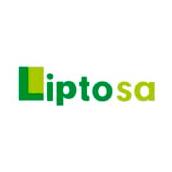

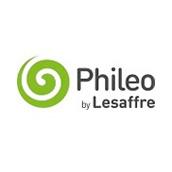
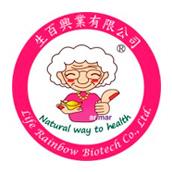

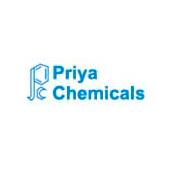
.jpg&w=3840&q=75)